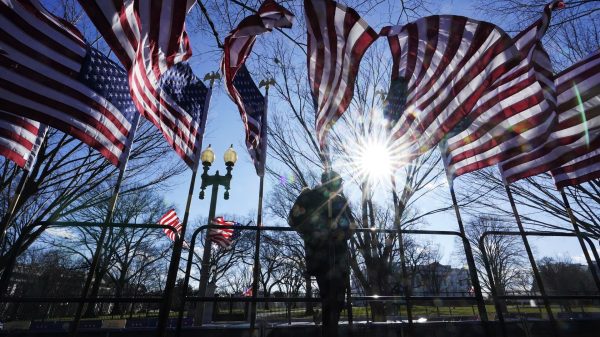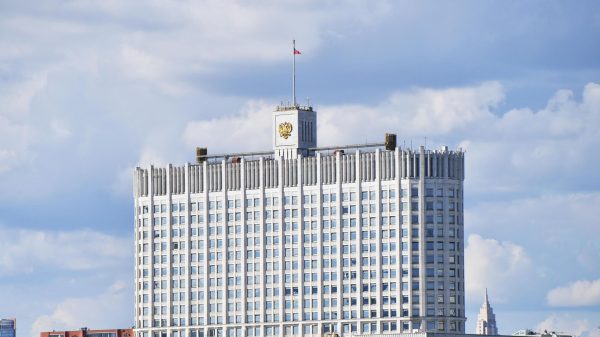Play Video
1:09
Scores feared dead after glacier causes dam burst in India – video
About 130 people are feared dead in northern India after a Himalayan glacier broke off and caused a high velocity surge of water down a river, sweeping away one dam in its path and damaging another.
A frantic rescue mission began to recover the hundreds of bodies washed away when an avalanche of water, mud and rocks swept down a narrow gorge in Chamoli district, in the Himalayan state of Uttarakhand.
Seven bodies had been recovered by Sunday night but 125 people remained missing.
According to India’s national crisis management committee (NCMC), the flood along the Himalayan valley was caused by a mountain glacier partially breaking off into Rishiganga river and causing a dramatic rise in water levels upstream.
While some have said the incident shows the growing impact of the climate crisis – a 2019 survey found that the Himalyan glaciers are melting at “alarming speed” – local activists and writers have also blamed the intensive building along Uttarakhand’s rivers and mountains of dams and hydropower infrastructure, which they argue is destabilising the ecologically fragile Himalayan region and resulting in more extreme weather events.
Graphic
There are 550 dams and hydroelectric projects in the state of Uttarakhand alone, with 152 big dam projects, and in the area affected by Sunday’s flash flood, there are 58 dams along the rivers and their tributaries. A new road is also being built into the mountains to ease access for tourists to Uttarakhand’s famed Kedarnath temple, which has involved blasting into the rocks and the reported dumping of mud and rubble into the waters.
Hridayesh Joshi, author of Rage of the River, about a similar flooding incident in Kedarnath, Uttarakhand in 2013 which took almost 6,000 lives, said that experts and activists had already been raising questions over the dam and road projects.
“In this Himalayan area, there are 10,000 big and small glaciers so we should be very careful about building any development projects in this ecologically fragile region, especially as climate change makes it even more fragile,” said Joshi.
“But instead the government wants to exploit hydropower for income and gives approval to all these big dam projects on every river, who we then see flouting environmental laws. We can’t say these projects are entirely to blame for this latest disaster, but they are definitely one of the contributing factors.”
According to footage and witness accounts, on Sunday morning a towering surge of water swept down the river at high speed, gathering momentum as it moved through the narrow gorge, and completely wiped out the small privately-run Rishiganga hydroelectric dam on the river as well as enveloping buildings, trees and people in the vicinity.
As it surged into the tributary Dhauliganga river, it then impacted a larger 500MW hydropower dam, currently under construction by the government’s National Thermal Power Corporation.
The surge of water lasted about 15 minutes. In the aftermath, the army was deployed to help the rescue operation. Most of those still missing had been constructing or working on two dams decimated by the surge of water, as well as local shepherds who had been grazing their sheep and goats.
In a dramatic rescue, 16 workers were pulled out alive from a tunnel beneath one of the dams hit by the flash flood, which had been enveloped by mud and debris.
Bharti Jain
(@bhartijainTOI)
Rescue operations by @ITBP in Uttarakhand pic.twitter.com/BdMdIefA3K
February 7, 2021
Fears of flooding led to hundreds of villages downstream being evacuated but the authorities later said there was no risk.
The prime minister, Narendra Modi, said he was closely monitoring the situation.“India stands with Uttarakhand and the nation prays for everyone’s safety there,” he tweeted after speaking with the state chief minister.
Geologist Dwarika Dobhal, from the Wadia Institute of Himalayan Geology, had a different theory to the authorities on what caused the flooding and said he believed it was an avalanche, not a broken glacier, that had likely caused the flood. He said it was “more likely” that in recent weeks there had been a debris blockage in the river upstream, causing a lake to form and water to gradually build up. An avalanche had then “caused this lake to breach and the water to surge down the valley at speed”.
“Climate change will make these events more common,” said Dobhal.
For the local community in Uttarakhand, the floods evoked traumatic memories of the Kedarnath disaster of 2013, when a multi-day cloudburst led to landslides and flooding along dozens of rivers and almost 6,000 people lost their lives. In the aftermath of Kedarnath, the supreme court halted the clearance of every dam project in the state, and an expert committee later concluded that the large dams had a role in aggravating the disaster.
Local activist Vimal Bhai, who is part of the state’s Matu Jansangthan people’s movement, has been working on Uttarakhand’s rivers for 33 years and was part of the fight to halt new dam building in the state after the Kedarnath disaster in 2013.
“We have been saying for years how these huge infrastructure projects are making the area more fragile and dangerous but no-one listened to us,” said Bhai. “And now the same thing has happened again. Why will the government not learn the lessons of the past?”






















































Свежие комментарии